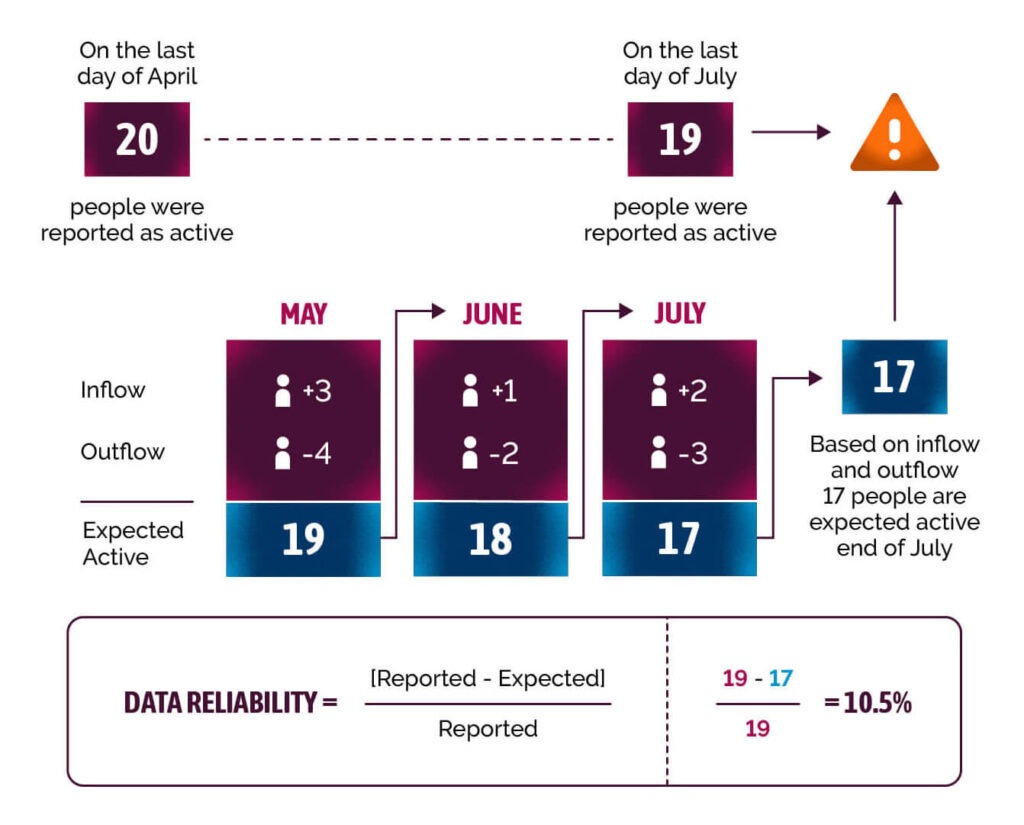Standards
Single Adults Quality Data Standards
Quality by-name data refers to a comprehensive dataset of every person in a community experiencing homelessness, updated at least monthly. This comprehensive and dynamic view of the system’s data enables communities to work more effectively towards ending homelessness by using data to prioritize resources, test changes to their system, and understand whether their efforts are helping them make progress towards functional zero — an ongoing state where homelessness is rare and brief.
Built for Zero recognizes two tiers of Quality Data: initial and advanced. Meeting the initial Quality Data standard signifies that the community’s data system is comprehensive, accurate, reliable, and person-centered. It is the cornerstone of confidence in the data’s validity and reliability. It demonstrates that the community can confidently use the data to track progress and changes across their system. The three criteria that indicate a community meets this threshold are:
- Meeting Initial Standards: The community must meet the initial Quality Data thresholds on the Single Adult Scorecard.
- Consistent Reporting: The community must consistently report data for a minimum of six out of the seven BFZ metrics1. This must be done for four consecutive months, including the current month, for each population or subpopulation being considered for Quality Data. Learn more about tracking the BFZ metrics in the Tracking List Statuses section of the toolkit.
- Low Margin of Error: The three-month data reliability score for each population or subpopulation must be less than 15%. This ensures a lower margin of error and a higher level of data accuracy.
While meeting the initial threshold is required to achieve a Quality Data milestone, the advanced threshold indicates high confidence in the long-term reliability, sustainability, and equity of system outcomes. It’s about maintaining accuracy over time, ensuring data systems can withstand the test of time.
To achieve initial and advanced Quality Data for the single adults population, community teams must demonstrate they are able to meet the respective Quality Data standard criteria for the veteran and chronic subpopulations either prior to or at the same time as meeting the respective Quality Data standard criteria for the single adults population. More information about each population and subpopulation can be found in the Reporting Reference Guide.
What is data reliability, and how is it calculated?
Data reliability is a measure used by Built for Zero to determine the margin of error within community-submitted data. Calculating the margin of error helps to determine how far off the number of people REPORTED as actively experiencing homelessness is from the number of people EXPECTED to be reported as actively experiencing homelessness based on inflow and outflow. Data reliability is calculated each month (one-month data reliability) and across the previous three months (three-month data reliability) to determine if a community’s data is balanced over time.

How can my community verify that we have achieved Quality Data?
Once the above criteria is met, communities can work with their BFZ coach to verify their Quality Data status.
Footnotes:
- Inclusion of the “No Longer Meets Population Criteria” metric in reports is highly recommended, yet it isn’t a requirement for achieving Quality Data.

